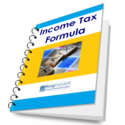We often hear the term “Capital Gains”. What is capital gain or loss? How is it classified into long term and short term? What is its treatment as far as income tax goes? Read on…
While filling our income tax return forms, we encounter the section called “Income from Capital Gains”. Let’s understand what capital gains is, how it is classified into long term and short term, and how it is taxed.
Capital gain (or loss) is a profit (or loss) made while selling a capital asset. Therefore, let’s start by understanding what capital asset is.
Capital Asset
Capital asset roughly means property – a house, an apartment, office space, factory, godown or a plot of land.
Agricultural land is not considered as a capital asset, unless it is situated within the limits of, or within 8 kilometers of a municipality.
Investments such as shares and bonds are also considered as capital assets.
When does a Capital Gain or Loss arise?
When the sale price of a capital asset is more than its purchase price, you incur a capital gain.
Similarly, when the sale price of a capital asset is less than its purchase price, you incur a capital loss.
(In some cases of long term capital gains, we have to consider the indexed cost of acquisition – but we’ll come to that later, while discussing long term capital gains)
Classification of Capital Gains
Capital gain is classified into two types, depending on the period of holding of the capital asset.
- Short Term Capital Gain (STCG)
- Long Term Capital Gain (LTCG)
This classification also varies depending on the type of the capital asset. So, let’s understand this classification based on the type of the capital asset.
Shares / Stocks / Equities and Equity Mutual Funds (MFs)
Short Term Capital Gain (STCG)
If shares or equity MFs are held for less than 12 months before selling, the gain arising is classified as Short Term Capital Gain.
[The only condition here is that the shares / equities should be sold on a recognized stock exchange (for example, BSE or NSE), and a securities transaction tax (STT) should be paid on it.
If the sale of shares is off-market (that is, if the sale is not on a stock exchange), the gain would be classified like that for other capital assets. More on this in later sections.]
In this case, the short term capital gain is taxed at 10% of the gain. (This would increase to 15% for FY 08-09 / AY 09-10)
(Do not understand the difference between Financial Year, Assessment Year and Previous Year? Please read “Income Tax (IT) Jargon – Financial Year (FY), Assessment Year (AY) and Previous Year (PY)“)
A short term capital loss arising from sale of shares can be offset against a short term capital gain from sale of other shares, as long as both the sales occur in the same financial year.
Long Term Capital Gain (LTCG)
If shares or equity MFs are held for more than 12 months before selling, the gain arising is classified as Long Term Capital Gain.
In the case of long term capital gain arising out of the sale of shares or equity mutual funds, there is no income tax.
The long term capital gain in this case is tax free.
All Other Capital Assets
Short Term Capital Gain (STCG)
If the capital asset is held for less than 36 months before selling, the gain arising from it is classified as Short Term Capital Gain.
This short term capital gain is clubbed with your income for the year, and is taxed at a rate as per the applicable tax slabs / brackets.
Short Term Capital Gain = Sale Price – Purchase Price
This is true even for shares or equity mutual funds sold off market.
For example,when a company comes out with a buyback offer, or when a company taking over another company comes up with an open offer, and you tender your shares to the company directly, any gain arising out of this would be taxed as if the sale was of “other capital asset”, and would be clubbed with your income for the year of sale for the purpose of calculation of income tax.
(To know the current income tax slabs / brackets, please read “Income Tax (IT) Slabs / Brackets and rates”)
Long Term Capital Gain (LTCG)
If the capital asset is held for more than 36 months before selling, the gain arising from the sale is classified as Long Term Capital Gain.
In case of assets other than equity shares or equity MFs, the long term capital gain is taxed at 20%. In other words, 20% of the long term capital gain has to be paid as income tax.
(In case of debt mutual funds, the capital gain tax is 10% if the cost of acquisition is not indexed, and it is 20% if the cost of acquisition is indexed)
But how do we calculate the gain? Is it just like short term capital gain: The sale price less the purchase price?
No! And this is another place where inflation is your friend!!
(Where else is inflation your friend? To find out, please read “Settle early in life – buy a home when young”)
We know that the cost of money decreases over a period due to the effect of inflation. Thus, an amount some years back can’t be compared directly with an amount today – Rs. 100 were worth a lot more in 1985 than today!
So, we first need to make the purchase price comparable to today’s price. For doing this, we need to use the inflation figures from both these years.
But the Reserve Bank of India (RBI) has made our task easy here – for every year (starting in 1980), they have come up with a number. This is called the Cost Inflation Index.
The Cost Inflation Index in itself doesn’t convey anything – but the increase in the number from one year to another is a representative of the change in prices (and therefore, inflation) between these years.
The purchase price that needs to be used for calculating the long term capital gains is thus called the Indexed Cost of Acquisition.
Indexed Cost of Acquisition = Actual Purchase Price * (Cost Inflation Index during the year of sale / Cost Inflation Index during the year of purchase)
And,
Long Term Capital Gain = Sale Price – Indexed Cost of Acquisition
Also, in case of a house, you can add the cost of improvement (incurred during your ownership of the house) in the cost price of the house. Again, this cost can be indexed (and therefore, increased!).
How much capital gains tax to pay if your income is below the taxable threshold?
(To know the current income tax slabs / brackets, please read “Income Tax (IT) Slabs / Brackets and rates”)
Short Term Capital Gain
If your total income including the STCG is less than the taxable threshold, you would not have to pay any STCG tax.
If your total income excluding STCG (A) is less than the taxable threshold, but the total income including the STCG (B) is more than the taxable threshold, you would only have to pay STCG tax on the excess amount (B – taxable threshold).
Long Term Capital Gain
If your total income including the LTCG is less than the taxable threshold, you would not have to pay any LTCG tax.
If your total income excluding LTCG (A) is less than the taxable threshold, but the total income including the LTCG (B) is more than the taxable threshold, you would only have to pay LTCG tax on the excess amount (B – taxable threshold).
This is just preliminary information about Short Term and Long Term capital gains, and the income tax on them.
Please also read:
– “Long Term Capital Gains (LTCG) on Sale of a House – Calculation and Income Tax”
– How to save / avoid Long Term Capital Gain (LTCG) Tax on Sale of a House
– “Set Off and Carry Forward of Losses – Capital Gains and House Property“





